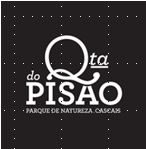Case Study
Quinta do Pisão Nature Park – A landscape-scale conservation project that links wildlife and people
Contact name
João Cardoso de Melo
Institution name
Cascais Ambiente
Region & country
Cascais, Portugal
Summary
The growth of urban areas on the border of natural protected areas such as a park can represent a threat to the biodiversity and landscape. The pressure in local communities to gain access to open spaces and wild areas for recreational purposes results in disturbances and habitat fragmentation. Periurban areas can play an important role in a transition and impact mitigation territory. These areas, when abandoned, represent a focus for bad behavior and general landscape degradation. A landscape scales conservation project was implemented in a 355ha abandon farm, Quinta do Pisão, in Cascais municipality, concerning the preservation of the Natura 2000 habitats and landscape mosaic. The aim was to revert the abandoned process and reactivate landscape

Visitors in the crop fields
Photo by: João Cardoso de Melo

Donkeys
Photo by: João Cardoso de Melo

Products from the park
Photo by: João Cardoso de Melo

View of the Quinta do Pisão
Photo by: João Cardoso de Melo
Background of the project
The Quinta do Pisão, worked since 1949 as a ” Farm Colony” for mental and tuberculosis patients. The 300 patients worked the fields to get “cured” and the colony was self-sustained. In 1990 legal issues concerning self-production ended the farm activities, and the whole 355 ha were abandoned. In 2008 the farm was used for illegal hunting, littering, rave party’s, and all the buildings present inside were vandalized. It’s was known for being an unsafe please where natural values were at risk.
Political support was a priority, then involving strategic stakeholders such as the Social Security Institute (owner of part of the propriety) and the Natural Park to share a vision for a nature park.
Next was to gain physical control of the farm, to stop indiscriminate entrances and all the bad behaviors we had, to show a change was going to happened. We made an ecological survey to gain more knowledge for natural values and to draw a draft plan for the park.
Solution and actions taken
A master plan for the park was approved and shared at a political level and also among the stakeholders, which included the concept of an open park, free of charge, were landscape it’s maintained for is ecological value and farming is used as a tool to restore and maintain priority habitat besides all other conservation actions. Then, we started to gradually open the farm to the public, restored the buildings and attracted the public to appropriate themselves for the park and recognize it’s value.
Gates and fences to control the access, development of signals with information saying “Nature Conservation Actions” in the farm entrances. The fields were plowed and meadows installed, we brought sheep’s, donkeys and horses to maintain them. This action by itself had a huge impact it the community. We start to restore the oak forest taking down eucalyptus plantation and acacia invasion areas with a volunteer’s program, involving the community. In 2011 we installed educational panels and open the park to the public
Other institutions or parties involved
- Cascais Municipality;
- Cascais Ambiente – Adminstration Board;
- Social Security Institute;
- Nature Conservation Institute;
- Sintra-Cascais Natural Park;
- Santa Casa da Misericórdia – Social Organization
Results
The park has 3500 visitors/month, we organize regular nature activities and run every year a volunteer program. We are certified as an organic producer for vegetables with 1 ha of vegetable gardens and 1 ha of lavender field, visitors are invited to “pick your own crop”, promoting the contact with the producer, local and seasonal food. The park has 100 sheep’s and 19 donkey endangered national breeding species. We made a partnership with 5 beekeepers to produce honey in the park and with social part.
Challenges
At the beginning, we had problems to restore the park’s integrity, and we needed the Natural Park Rangers help us with enforcing discipline. We needed to “educate” the public about the park rules and the farm animal/pet conflict. Park Ranger’s team was essential to maintain regular maintenance work and surveillance during weekends and holidays when the park reach visitor peak, finally annual regular budget to fulfill park objectives
Lessons learned
- A good knowledge of the natural values to be protected;
- Know the historical background to understand the land and people who lived there;
- A good action plan and a multidisciplinary team to manage the park is fundamental;
- Always look for the right tools to fix problems, be open to try new approaches, know how public use the park to anticipate conflicts, understand their wishes and act before negative impacts occur, be resilient and gain public’s trust.
Other resources
-
Video - Quinta do Pisão presentation and interviews
-
Video - Sustainable Agriculture products from the Quinta do Pisão
-
Video - International Environment Day 2015 - The Quinta do Pisão receives Lusitan horses
-
Video - Sheep shearing in Quinta do Pisão
-
Video - Overview of the Quinta do Pisão
Contact name
João Cardoso de Melo
Institution name
Cascais Ambiente
Website(s)
